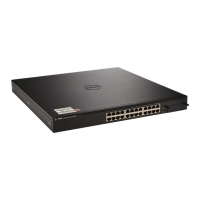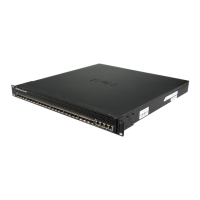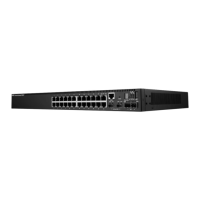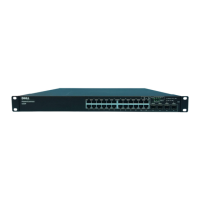832 Configuring Data Center Bridging Features
best-effort transmit characteristics. PowerConnect 81xx switches support
strict priority and Weighted Deficit Round Robin (WDRR) scheduling with
up to two lossless traffic classes. WDRR schedules traffic based on average
bandwidth consumed vs. frame counts.
ETS Operation
The normal (default) operation of PowerConnect switches, when
uncongested, is that packets are scheduled for output in the order in which
they are received, that is, using FIFO scheduling. The class of service (CoS)
mechanism enables the administrator to schedule packets for output ahead of
other packets when the switch is congested, choose which type of packets to
drop when the switch is congested, and assign a minimum bandwidth
guarantee to ensure scheduling fairness. These mechanisms operate at the
CoS queue level; that is, the minimum bandwidth guarantees are made
across all configured CoS queues.
ETS provides a second level of scheduling for packets selected for
transmission by the CoS scheduler. ETS operates at the traffic class group
(TCG) level and supports sharing of bandwidth across TCGs, bandwidth
assignment for each TCG, and queue discipline (drop behavior) for each
TCG. PC81xx switches support three TCGs internally, up to two of which
may be configured as lossless.
When a packet arrives on an ingress port, it is forwarded to the appropriate
CoS queue based upon the dot1p mapping. The dot1p mapping maps the
user priority contained in the received VLAN Priority Tag to the traffic class
or uses the default port assignment. A traffic class identifies a particular CoS
queue. If the ingress port is configured to use 802.1p CoS mapping and the
port is configured to trust the user priority value in the received frame, then
the frame is forwarded to the appropriate CoS queue per its 802.1p user
priority value.
NOTE: Minimum bandwidth guarantees and scheduling mechanisms apply only
when the switch is congested. When the switch is not congested, packets
egress the switch as soon as they are received.

